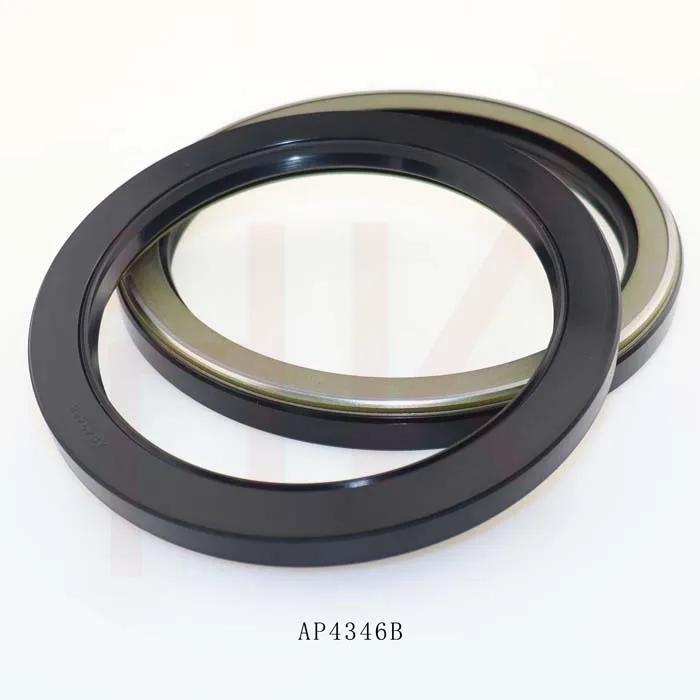Nov . 05, 2024 15:09 Back to list
hydraulic dust seal
The Importance of Hydraulic Dust Seals in Fluid Power Systems
In the world of hydraulic systems, ensuring the longevity and reliability of equipment is crucial. Among the various components that contribute to the seamless operation of these systems, hydraulic dust seals play a pivotal role. These seals are essential not only for preventing fluid leaks but also for protecting the internal components of hydraulic machinery from contaminants such as dust, dirt, and moisture. Understanding the importance of hydraulic dust seals can help manufacturers and operators implement the best practices for maintenance and operation.
Functionality of Hydraulic Dust Seals
Hydraulic dust seals are designed to act as a barrier between the internal components of hydraulic machinery and the external environment. Their primary function is to prevent the ingress of dirt and other contaminants that can cause wear and tear on sensitive parts, such as pistons and cylinders. By stopping debris from entering the hydraulic system, dust seals help maintain a clean working environment, promoting optimal performance and extending the life of the machinery.
Moreover, hydraulic dust seals also help maintain the necessary pressure within the system. A properly sealed hydraulic system can operate efficiently, ensuring that the hydraulic fluid flows adequately to execute various actions, such as lifting, pushing, and pulling. When seals degrade or fail, not only does this lead to potential fluid leaks, but it also results in decreased system efficiency, which can affect overall productivity.
Types of Hydraulic Dust Seals
There are several types of hydraulic dust seals available on the market, and the choice largely depends on the specific application and environmental conditions. Some common types include
1. U-Cup Seals These seals have a U-shaped cross-section that provides excellent sealing capability against leakage. They are widely used due to their simple design and effective performance in various hydraulic applications.
2. O-Ring Seals Frequently used for static sealing, O-rings can also be employed in dynamic applications where they provide good resistance to pressure and low friction.
hydraulic dust seal

3. Rod Seals These seals are specifically designed for hydraulic cylinders to prevent leakage along the rod as it moves in and out of the cylinder.
4. Wiper Seals Often used in conjunction with other dust seals, wiper seals serve to remove any debris from the rod before it enters the cylinder, providing an additional layer of protection.
Selecting the right type of hydraulic dust seal is essential for optimal performance, and consideration should also be given to the material of the seal, as various materials offer different levels of resistance to chemicals, temperatures, and wear.
Maintenance and Inspection
Regular maintenance and inspection of hydraulic dust seals are fundamental to the effective functioning of hydraulic systems. Over time, seals can wear, harden, or become damaged due to exposure to high pressures, extreme temperatures, or harsh chemicals. Routine checks should include visual inspections for signs of wear or damage, as well as ensuring that the seals are properly lubricated.
In addition, operators should be aware of the signs that indicate a seal may be failing. Symptoms such as increased fluid leakage, reduced pressure, or unusual noises during operation can all point to issues with the dust seals. Addressing these concerns promptly can save operators time and money by preventing more extensive damage to the hydraulic system.
Conclusion
In summary, hydraulic dust seals are a critical component in ensuring the efficiency and longevity of hydraulic systems. By preventing contaminants from entering the system and maintaining pressure, these seals help keep machinery running smoothly. With various types and materials available, it is important for operators to select the appropriate dust seals for their specific applications. Furthermore, regular maintenance and inspection are necessary to identify any potential issues early on. As technology advances, the design and materials used in hydraulic dust seals will continue to improve, leading to even greater reliability and performance in hydraulic applications. With proper understanding and care, hydraulic dust seals can significantly enhance the operational life of hydraulic machinery, making them an invaluable investment for any industrial operation.
-
TCN Oil Seal Metal Ring Reinforcement for Heavy Machinery
NewsJul.25,2025
-
Rotary Lip Seal Spring-Loaded Design for High-Speed Applications
NewsJul.25,2025
-
Hydraulic Cylinder Seals Polyurethane Material for High-Impact Jobs
NewsJul.25,2025
-
High Pressure Oil Seal Polyurethane Coating Wear Resistance
NewsJul.25,2025
-
Dust Proof Seal Double Lip Design for Construction Equipment
NewsJul.25,2025
-
Hub Seal Polyurethane Wear Resistance in Agricultural Vehicles
NewsJul.25,2025
-
The Trans-formative Journey of Wheel Hub Oil Seals
NewsJun.06,2025
Products categories
















